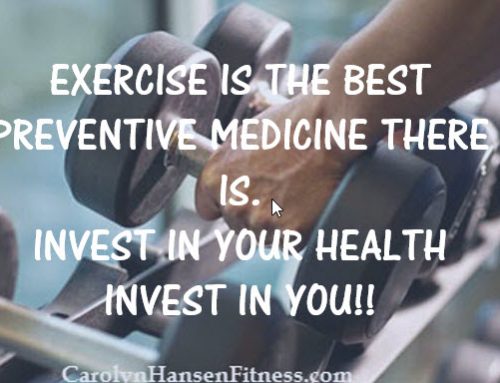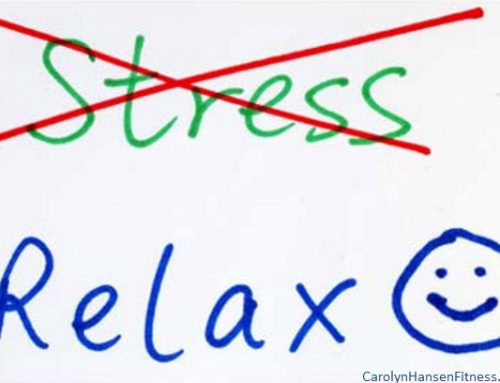If aerobics (running, treadmill, spinning classes) have been your main source of exercise, and your muscles have received little attention, you’ve not yet tapped into your greatest, and most powerful resource for health and fitness: strength training.
Strength-training is both powerful and empowering. It challenges the body, it strengthens, and tones muscles and increases bone density all while decreasing fat. However, the terminology, or language of resistance training can be intimidating, especially for a beginner.
A bit of confidence goes a long way when beginning something new and strength training is no exception. Familiarizing yourself ahead of time with this terminology/language, helps to alleviate some of the anxiety, fear, and confusion you might otherwise feel when beginning your weightlifting or resistance training program.
Basic strength training terminology:
Exercise – the actual strength training complete movement of the muscle group being performed. The bench press is a great example/exercise.
Repetitions or reps – one full movement of the exercise from start to the prescribed endpoint and back to the original starting position is called a repetition. Often you perform each exercise between 8 –12 repetitions.
Sets – a set is a fixed number of repetitions or repeated exercise movements. For example, doing a bench press 10 consecutive times will complete 1 set. Usually, 1-3 sets make up one exercise routine. The pause between sets is approximately 1 – 1.5 minutes. This allows muscles to retain enough strength to complete the next set effectively.
Positive phase – this is the phase of the exercise that requires your muscles to contract. When you are doing a bench press for example, the positive phase is when you press the weight upwards, away from your body.
Negative phase – this is the phase whereby you slowly allow the weight to return to home position. For example, for the bench press, the negative phase is when you slowly lower the weight back down to your chest.
Overload – To see gains in strength you must always stimulate the muscle more than it is accustomed to.
Progression – The active muscle must continue to work against a gradually increasing resistance in order to meet overload. You need to increase the amount of the weight you use on your exercises, over time, to keep progressing.
Intensity – Intensity matters. The correct level of intensity is probably the most important factor in an efficient strength training program. In general, the higher or greater the intensity the better the strength gains. When it comes to strength training, it refers to the amount of weight you are lifting and indicates how difficult the exercise is for you to complete. Increasing your intensity via the weight you are lifting, is key to continual progression and defines the amount of success you’ll enjoy with your strength training program.
High intensity means working each muscle to the point of fatigue, when no more repetitions can be performed. This relates to the Overload Principle that says to increase muscular size and strength, a muscle must be stressed, or “overloaded,” with a workload that is beyond its present capacity and trigger an adaptive response (muscular growth).
Exercise that does not produce enough muscular fatigue will not stimulate muscular growth, however, like all things related to the body, balance is key. It is important to find the right balance between being careful when exercising to prevent injury and progressing to increase strength.
A rule of thumb in selecting weight is: Choose a weight that you can lift, using proper form, at least 10 times with effort, and no more than 15. If you can lift a weight more than 15 times, it’s too light.
When exercising, it is important to monitor your intensity level (degree of effort used) to make sure you are working at a pace that is challenging enough to help you reach your goals, but not so hard that you hurt yourself. One way to do that is to use a Perceived Exertion Chart.
Perceived Rate of Exertion (or PRE) is a self-check mechanism of sorts used to help you maintain awareness of your level of workout effort, allowing you to work at your own pace, and capabilities, regardless of your current fitness or strength levels.
Grading on a scale from 1 to 10, the PRE scale helps keep you aware of how hard you are (or are not) exercising, helping you to reach your fitness and weight loss goals in the fastest possible manner. It is a subjective self-measure of your own work output based on how hard some exercise feels to you at a given time.
PRE scale:
10: All out maximum, (not reps left in the tank) – not recommended
9: Second to last repetition – (tough but there is still one left)
7-8: Gets harder (but can do another 2-3 reps)
5-7: Easy (Weight moves quickly when moderate lifting is applied) or lower.
The 7 – 8 level (getting harder but can do another 2-3 reps) is likely where your first working set might be while your last set may be set at 9. For longer, slower workouts the PE should be at level 5.
Level 5-6 is perfect for most workouts. If you are doing interval training, you want your recovery to be around a 3-4 (approximately warm up sets). Your intensity blasts should be at around 8-9. For longer, slower workouts, keep your PE at Level 5 or lower.
An important factor to keep in mind as you experiment with your new strength-training journey is this: although the gym offers a machine for every imaginable exercise, machine training is not the same as free weightlifting/training. Machines are two dimensional in nature, easier to use, and provide the body support needed while doing the exercise.
Free weight training, on the other hand, adds another layer to your fitness challenge because your body must support you while you perform the exercise. Things brings more muscles, including torso muscles into play allowing you to strengthen multiple muscles at the same time.
When it comes to getting the best bang for your buck, strength-training using free weights offer the best results. It is, without doubt, the gold standard for achieving the best results in the shortest amount of time.
Adopt a preventive approach to personal health –
“Wellness Wake Up Call” can help you do just that…
For more tools and resources from Carolyn Hansen to assist you in attaining your health and fitness goals and achieving the success you desire in life, please visit:








Leave A Comment